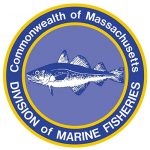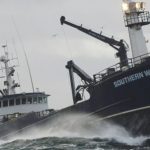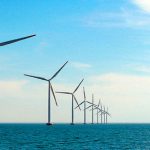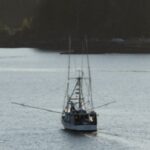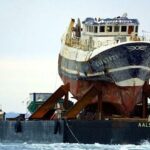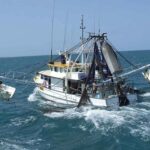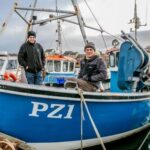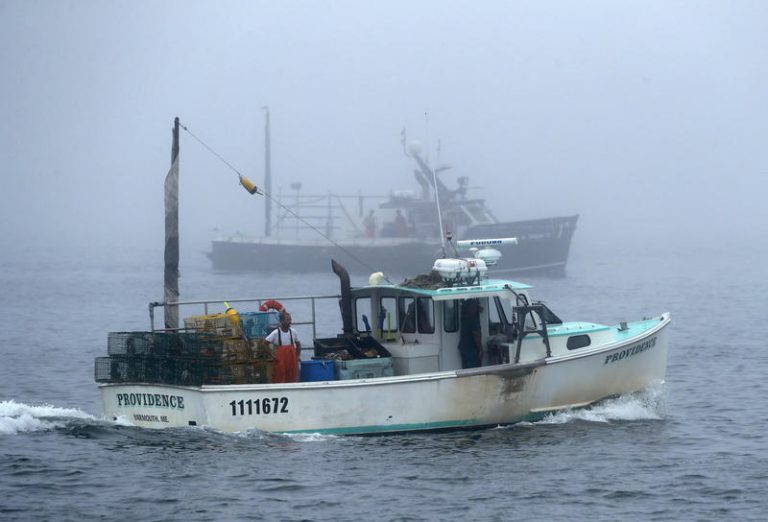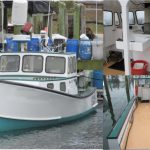Tag Archives: nitrogen
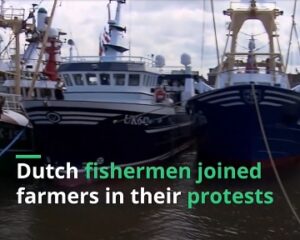
Dutch farmers and fishermen block roads and port to protest new emissions rules
At the heart of the protest are targets introduced last month to halve harmful nitrogen compounds by 2030. It is the latest attempt to tackle a problem that has plagued the country for years. Dutch fishermen have joined farmers in protesting nitrogen emission targets. In Harlingen, they blocked the port with trawlers meaning ferries to the islands of Terschelling and Vlieland could not leave for hours. Shrimp fishermen in particular fear that they will run into problems due to the government’s emission targets. As of next year, they will need to apply for new fishing permits. Without the necessary adjustments to their trawlers, the permits could be withheld. It would mean they would no longer be allowed to do their jobs., Video, >click to read/watch< 16:51 An aside. Human sewage can introduce disease-causing pathogens and nitrogen into the ocean, potentially impacting human health as well as coastal ecosystems and the communities that depend on them for such purposes as fishing. Interesting facts, and graphics. >click to read<
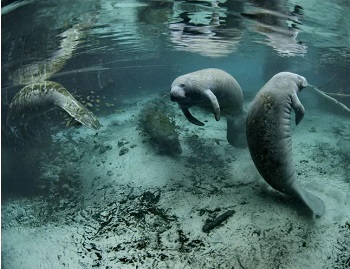
Polluted water flowing into Tampa Bay could cause massive algae bloom, risking manatee and fish habitats
Millions of gallons of water laced with fertilizer ingredients are being pumped into Florida’s Tampa Bay from a leaking reservoir at an abandoned phosphate plant at Piney Point. As the water spreads into the bay, it carries phosphorus and nitrogen – nutrients that under the right conditions can fuel dangerous algae blooms that can suffocate sea grass beds and kill fish, dolphins and manatees. It’s the kind of risk no one wants to see, but officials believed the other options were worse. >click to read< 18:38

Scientists Struggle to Save Seagrass From Coastal Pollution
In parts of the United States and other developed countries, there is growing recognition of the importance of seagrass and its sensitivity to nitrogen-rich runoff from sewage treatment plants and other sources. Too much nitrogen can spike algae growth, which clouds the water and blocks the sunlight seagrass needs to grow. “We think this is a problem that has to be solved,”,, Communities around the Great Bay have spent about $200 million to upgrade wastewater treatment plants,,, >click to read< 13:24

“ammonium” – San Francisco’s love affair with Dungeness crab grows more toxic
According to a new study published by researchers at San Francisco State University, wastewater pollution also makes our relationship with Dungeness crabs more toxic. Waste doesn’t disappear with a flush. In San Francisco, wastewater from homes and streets drains to treatment facilities operated by the San Francisco Public Utilities Commission. The facilities clean the water according to federal and state standards. But a form of nitrogen, called “ammonium,” remains when SFPUC releases the water into the Bay and Pacific Ocean. >click to read< 09:05
New Report Identifies Sources of Nitrogen Loading in Local Waters
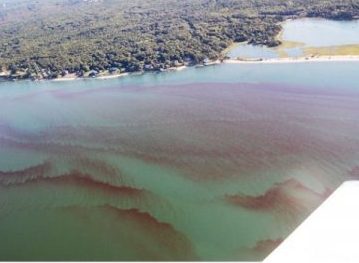 A new report has pinpointed sources of nitrogen loading in local waters. The New York Department of State released the Long Island South Shore Estuary Reserve water quality report on Wednesday, which identifies sources of pollution in eastern bays and takes a closer look at ways to improving the environmental health of local waters, a release said. Nitrogen sources identified in the report include stormwater runoff, drainage or seepage — including seepage from septic systems and cesspools. Other sources include failing or inadequate on-site wastewater treatment systems discharging to the bays, the report says. The “Long Island South Shore Estuary Reserve Eastern Bays Project: Nitrogen Loading, Sources, and Management Options” report was completed in cooperation with Stony Brook University School of Marine and Atmospheric Sciences and is an important step in estimating the amount of nitrogen that causes water degradation to the South Shore of Long Island, officials said. Excess nitrogen has led to an increase in algal blooms, a reduction in seagrass beds that provide habitat for shellfish and finfish and a host of other water quality impairments. The nitrogen pollution has also contributed to the decline of shellfish and commercial fishing on Long Island, the report said. Read the story here 08:21
A new report has pinpointed sources of nitrogen loading in local waters. The New York Department of State released the Long Island South Shore Estuary Reserve water quality report on Wednesday, which identifies sources of pollution in eastern bays and takes a closer look at ways to improving the environmental health of local waters, a release said. Nitrogen sources identified in the report include stormwater runoff, drainage or seepage — including seepage from septic systems and cesspools. Other sources include failing or inadequate on-site wastewater treatment systems discharging to the bays, the report says. The “Long Island South Shore Estuary Reserve Eastern Bays Project: Nitrogen Loading, Sources, and Management Options” report was completed in cooperation with Stony Brook University School of Marine and Atmospheric Sciences and is an important step in estimating the amount of nitrogen that causes water degradation to the South Shore of Long Island, officials said. Excess nitrogen has led to an increase in algal blooms, a reduction in seagrass beds that provide habitat for shellfish and finfish and a host of other water quality impairments. The nitrogen pollution has also contributed to the decline of shellfish and commercial fishing on Long Island, the report said. Read the story here 08:21
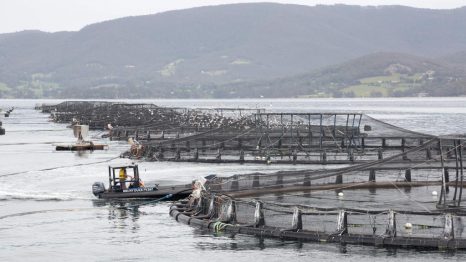
Meanwhile, in Tasmania – Drag fish farm regulation into 21st century
Sea based fish farms dump tonnes of faeces into the water. Think of them as a large toilet that does not flush. I cannot think of an industry in Tasmania other than aquaculture that is allowed to dump an unlimited amount of pollution in our waterways. Not only is there no limit on the amount of faeces salmon farms can dump in coastal waters, Tasmania also lacks science-based regulations to determine which parts of our coastline are suitable for salmon farms. International research shows that if you put fish farms in bays and harbours, where the water is shallow and current speed is low, fish faeces accumulates under cages, killing everything below them. Nitrogen discharged into the water column creates risk of harmful algal blooms, like the types we have seen worsening with increased salmon farms in the Huon and D’Entrecasteaux Channel. Other countries have responded to this research by offering incentives to move farming onshore. Read the story here 12:46
The real culprit behind the war on watermen is pollution
 The Maryland Department of Natural Resources (DNR) has been accused of waging a “war on watermen,” and watermen are fighting back, seeking changes in the way the bay’s fisheries are being managed. They say their livelihoods are being undermined and their culture threatened. They are right about that, but they are directing their anger at the wrong people. The bay is choking on an overload of nitrogen, phosphorus and sediment from a variety of pollution sources. The results of this over-enrichment are massive population explosions of algae that turn the water to pea soup from spring to fall. This cloudy water blocks sunlight from underwater grasses, reducing this critical habitat for crabs and juvenile fish to only 20 percent of historical coverage. Read the rest here 15:27
The Maryland Department of Natural Resources (DNR) has been accused of waging a “war on watermen,” and watermen are fighting back, seeking changes in the way the bay’s fisheries are being managed. They say their livelihoods are being undermined and their culture threatened. They are right about that, but they are directing their anger at the wrong people. The bay is choking on an overload of nitrogen, phosphorus and sediment from a variety of pollution sources. The results of this over-enrichment are massive population explosions of algae that turn the water to pea soup from spring to fall. This cloudy water blocks sunlight from underwater grasses, reducing this critical habitat for crabs and juvenile fish to only 20 percent of historical coverage. Read the rest here 15:27
Judge questions Cape Cod wastewater pollution claims
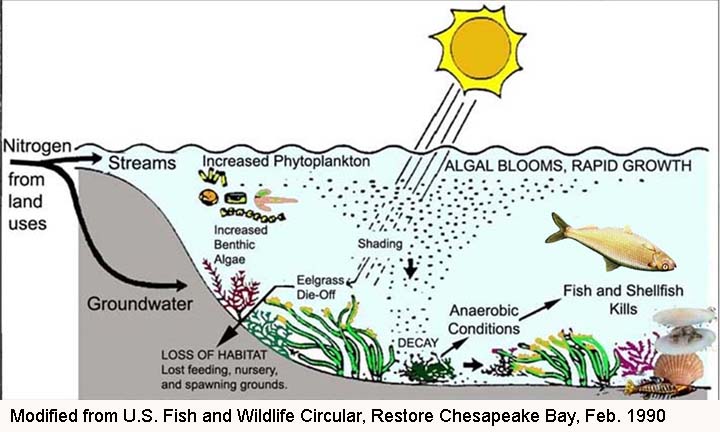
BOSTON — After months of inaction on two lawsuits brought by environmental groups against the Environmental Protection Agency over Cape Cod’s plans, a federal judge hinted Tuesday at the possible outcomes of the cases. more@capecodtimes 10:09
$75.6M wastewater treatment project moves forward in Portsmouth to meet the new nitrogen standard.
![]() Councilors were unanimously in support of the move, which involves the city using a technology known as “biological aerated filter” to reach a total nitrogen limit of 8 milligrams per liter on a seasonal rolling average basis. continued
Councilors were unanimously in support of the move, which involves the city using a technology known as “biological aerated filter” to reach a total nitrogen limit of 8 milligrams per liter on a seasonal rolling average basis. continued
Massive fish kill continues in the Neuse River By Eddie Fitzgerald, Sun Journal Staff NewBern, North Carolina
A massive fish kill on theNeuseRiver that has been ongoing for nearly a month has resulted in thousands of menhaden washed up on beaches nearNeuseHarbor. Mitch Blake, Neuse Riverkeeper, viewed the area Tuesday afternoon, saying there were several hundred thousand dead fish washed up on the beach and in the river. For 21 days, mostly Atlantic menhaden have been dying over a large portion of the river fromNew Bernto Hancock Creek, Blake said in an email. Some of the dead menhaden have ulcers that National Oceanic and Atmospheric Administration officials have identified as Aphanomyces invadans from six samples analyzed in Beaufort.
http://www.newbernsj.com/news/local/massive-fish-kill-continues-in-the-neuse-river-1.31744






 Thousands of dead bunker fish and hundreds of diamondback turtles washed ashore last May in Peconic Bay on the east end of Long Island, New York. Fed by warming waters and a stream of nitrogen, a foul bloom of algae had so depleted the estuary of oxygen that marine life suffocated. The waters of the bay swirled red and brown. Basic septic units are not designed to remove nitrogen. When too many households with septic are clustered too densely, nitrogen levels spike. Converted into ammonium in the tank and then nitrate in the soil, nitrogen seeps into groundwater and ends up in rivers, lakes, and bays, where it feeds a menagerie of algae species.
Thousands of dead bunker fish and hundreds of diamondback turtles washed ashore last May in Peconic Bay on the east end of Long Island, New York. Fed by warming waters and a stream of nitrogen, a foul bloom of algae had so depleted the estuary of oxygen that marine life suffocated. The waters of the bay swirled red and brown. Basic septic units are not designed to remove nitrogen. When too many households with septic are clustered too densely, nitrogen levels spike. Converted into ammonium in the tank and then nitrate in the soil, nitrogen seeps into groundwater and ends up in rivers, lakes, and bays, where it feeds a menagerie of algae species.  A comprehensive study of a major California estuary has documented the links between nutrient runoff from coastal land use, the health of the estuary as a nursery for young fish, and the abundance of fish in an offshore commercial fishery. The study, published the week of June 8, 2015, in Proceedings of the National Academy of Sciences, focused on Elkhorn Slough and Monterey Bay on California’s central coast. ” is nitrogen, whether it comes from an agricultural field or sewage or urban runoff.
A comprehensive study of a major California estuary has documented the links between nutrient runoff from coastal land use, the health of the estuary as a nursery for young fish, and the abundance of fish in an offshore commercial fishery. The study, published the week of June 8, 2015, in Proceedings of the National Academy of Sciences, focused on Elkhorn Slough and Monterey Bay on California’s central coast. ” is nitrogen, whether it comes from an agricultural field or sewage or urban runoff. 


























